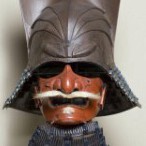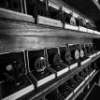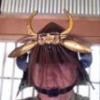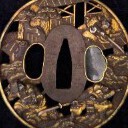-
Posts
6,206 -
Joined
-
Last visited
-
Days Won
20
ROKUJURO last won the day on June 6
ROKUJURO had the most liked content!
About ROKUJURO
- Birthday 08/11/1944
Contact Methods
-
Website URL
http://jean-collin.com/
Profile Information
-
Gender
Male
-
Location:
In a deep valley
-
Interests
Celtic and Japanese history and culture
Profile Fields
-
Name
Jean Collin
ROKUJURO's Achievements
-
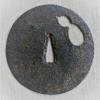
Help- Searching For A Matching Family Handachi Katana
ROKUJURO replied to Burntcicada's topic in Wanted to Buy
Steven, it might be a good idea to post your request in the "WANT TO BUY" section instead of here. Make better photos (dark, non-reflective background, close-ups etc.) so details could be seen. -

WWII Japanese Officer's Katana, 兼吉作 (Kaneyoshi saku)
ROKUJURO replied to yoda's topic in Military Swords of Japan
This thread belongs in the military section, I think. -

Tanegashima no.3 , black coating?
ROKUJURO replied to Lareon's topic in Tanegashima / Teppo / Hinawajū
Tony, in case poly-acryl (as base for rust converter) was involved, you won'get much success with solvents. It is a stubborn stuff.... -

Tanegashima no.3 , black coating?
ROKUJURO replied to Lareon's topic in Tanegashima / Teppo / Hinawajū
Hi Tony, that black stuff looks like a chemical rust converter to me. Some of these turn into a black, paint-like condition after drying. The shrinkage cracks - especially on photo no. 4 - would support that. I suspect, a former owner/seller might have messed with the barrel to cover up corrosion damage. -

translation help needed for this originally (?) made blade
ROKUJURO replied to kleber75's topic in Translation Assistance
There are no "standard" TSUKA. As you say, they may look similar, but they can vary internally, and the MEKUGI-ANA positions may differ as well. -

Please help me to identify the markings
ROKUJURO replied to Barny Dots's topic in Military Swords of Japan
Polish may even be o.k. but the photos are out of focus.- 15 replies
-
- gunto
- manufacture
-
(and 1 more)
Tagged with:
-
That is a good one Chris!
-
Looking at the NAKAGO-ANA, I suspect that many "copyists" ( read: fakers) never have seen an authentic TSUBA! Good idea to try an angle-grinder on these!
-
Just to give it a try: On the tag I think I can read KOBAYASHI SABURO (?) plus probably an address. That might be something for our NIHONGO experts!
-
Brian, there is some material online available and on NMB: HOAN TSUBA inherit their name from the founder of the Hoan school, SABUROEMON HOAN, who worked in OWARI province. It is believed that he died in 1614, and is buried at KOKUZANJI Temple. After 1600 the school moved to KII province and became retainers to the ASANO clan. They received a stipend of ten KOKU of rice (which is very little). Haynes lists eleven generations, ranging from early Edo to the beginning of the twentieth century. The second generation was known as HISATSUGU, KANENOBU, and YOEMON. Born in 1600, he was the son in law of the first generation HOAN. In 1619 he went with ASANO NAGAAKIRA (1619–1632) to HIROSHIMA. He succeeded his father as head of the family in 1645. He later worked for a branch of the TAKEDA DAIMYO family. Works signed HOAN KANENOBU are not rare, but they seem younger than the dates given to the second HOAN master The third generation was HISATSUGU, as were the next nine generations. The fourth generation also worked for the ASANO DAIMYO, and received a stipend of 800 KOKU of rice. Starting with the sixth generation, it appears they were no longer making sword fittings, but were ship builders. It seems that the tenth generation did make some fittings in the HOAN style, but were primarily ship builders. Steve Waszak on HOAN TSUBA June 2024 NMB Kawaguchi Saburoemon Noriyasu (Noriyasu can also be read "Hoan") was the Shodai of the Hoan group. He died in 1614, as Jean notes. He worked therefore in the Momoyama Period, not the Muromachi. It is believed he was originally of the Buke, but due to political misfortune (the assassination of Oda Nobunaga in 1582), his status shifted, and he became an armorer, and then, a tsubako. It is, of course, difficult to know the truth of this narrative, but this is what is generally accepted about this smith. Shodai Hoan tsuba are rarely encountered. HIs best works are masterpieces in iron, combining a powerful yakite-kusarashi effect on the surface of the plate, a beautiful "rippling" of the metal in the forging process known as "uwabamigane" (I believe this translates to something like "python skin"), and sensitively-rendered sukidashi-bori to express motif elements. His sword guards often carry that peculiar Momoyama vitality that infuses so many of the arts of that specific time. Tim Evans Most of the mumei attribution papers will either say Hoan den or kodai Hoan. The use of acid etching was introduced to Japan by the Europeans and there are a number of tsuba shops that utilized this technique. I have seen signed etched tsuba with both Jingo and Umetada mei, and I think most of the tsuba papered to Hoan Den are really one of these two groups. However, low relief acid etching and sukidashi bori can be sometimes hard to tell apart. Here is a brief description of the Hoan group: Shodai Hoan is a mysterious figure. He used Hoan as a personal name, whereas the later Hoan smiths used Hoan as a family name. What little information we have tells us that he was of a Buke family and was initially named Kawaguchi Hoan. He was adopted by Takada Sakyo, who was the lord of Kunotsubo castle in the Kasugai district in Owari Province. Sasano noted in the publication, Tosogu Yuhin Zufu (third edition) that according to Hoan family tradition, “when the the Oda family diminished, Sakyo’s child became an armor maker. He also made tsuba.” The diminishment of the Oda family in Owari can probably be traced to Oda Nobuo being removed from Owari Province in 1590, after quarrelling with Hideyoshi during the Odawara campaign against the Hojo. After losing his position as the heir of Takada Sakyo, Hoan reverted back to the Kawaguchi surname and became a metal worker for the Asano family in Kai Province. The Shodai Hoan is known for his unique and artistic treatment of the iron including a very visible coarse folding of the iron (uwebamegane), acid etched designs, and high heat melting of the the finished surface to create patterns.
-

Kanesada Wakizashi, Gimei? period?
ROKUJURO replied to GeneralBuyer52's topic in General Nihonto Related Discussion
Jacob, the signature is chiseled and read vertically (tip-upwards), so the the photos should be oriented accordingly. The blade looks authentic but might bear a GIMEI (= false signature) nevertheless. The possible age is not of great importance and does not add to the value. The condition is not good but you probably do not get more for this low price. It depends on what you wanted to buy. If you just want "a Japanese sword", then the price might be o.k. -
It is not a KOZUKA, it is a KOGATANA blade. The second last KANJI looks like NAO (or SADA) to me. Quite sloppily chiseled.
-
Let's not forget that the TSUBAKO of the late EDO JIDAI were masters of their craft and well able to forge very good TSUBA! In our TSUBA forging workshop this summer the participants experienced how much work is involved to just make a TSUBA blank. From there to a well balanced functional TSUBA with a good size, even thickness and appealing surface texture is still quite a jump. And then imagining the long experience, commitment and talent that are necessary to create a real masterpiece leads to great respect for the old masters and their work!
-
This seems to be a general thing. A thickness between 6 and 5 mm is often seen, but there are rare exceptions up to 10 mm, and many early iron TSUBA of the TÔSHÔ and KACHUSHI type are much thinner.




